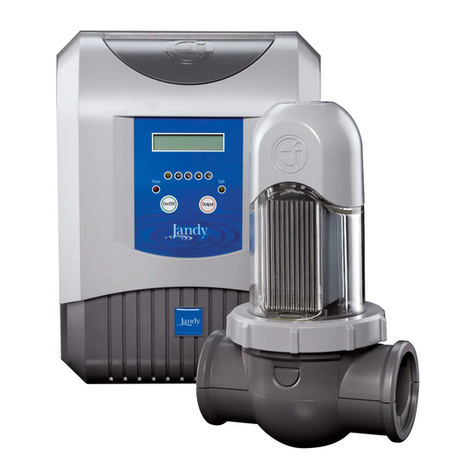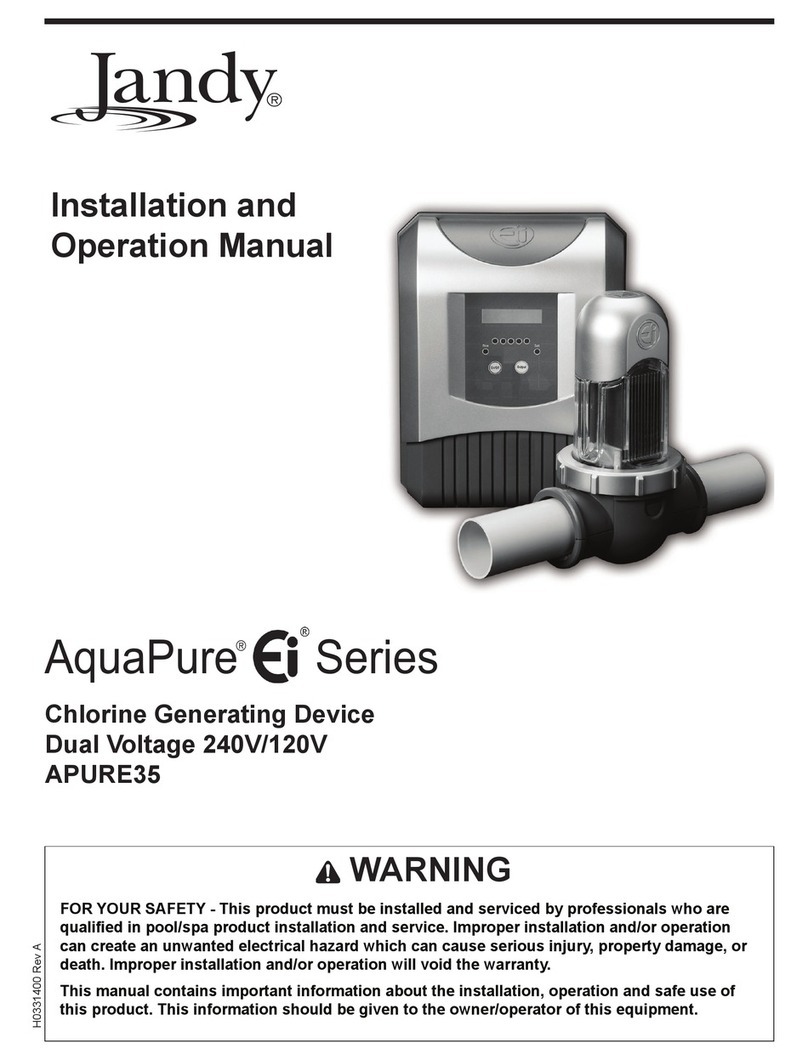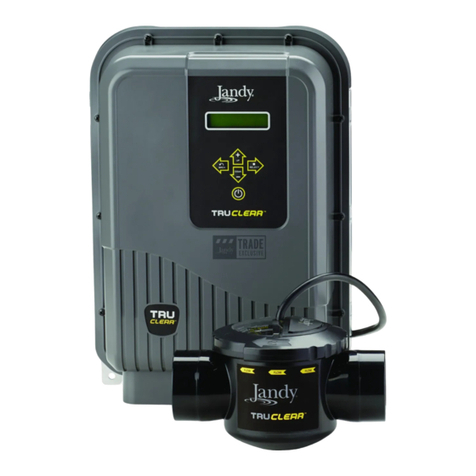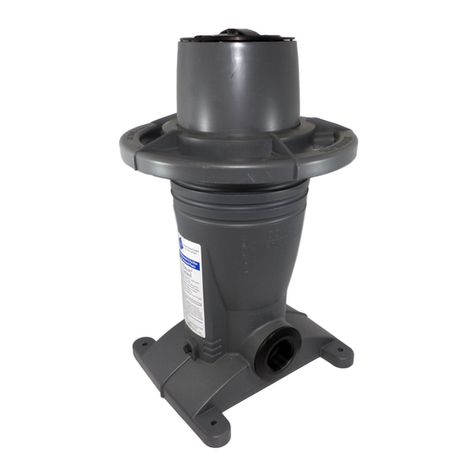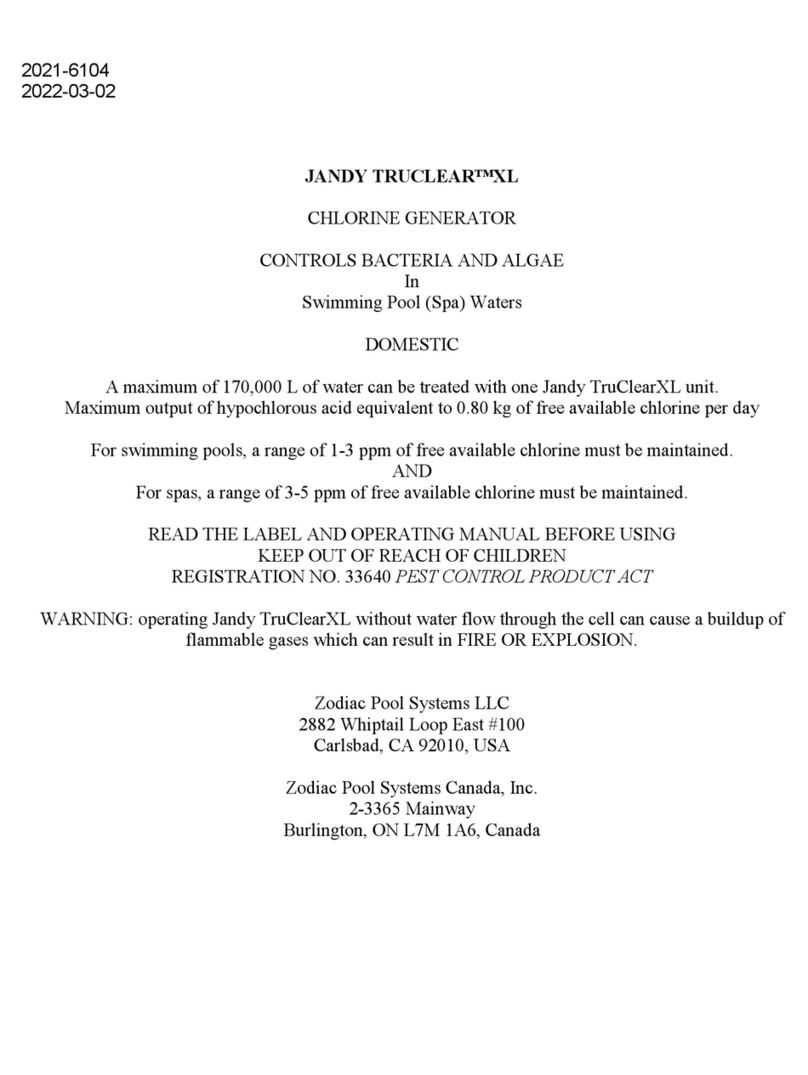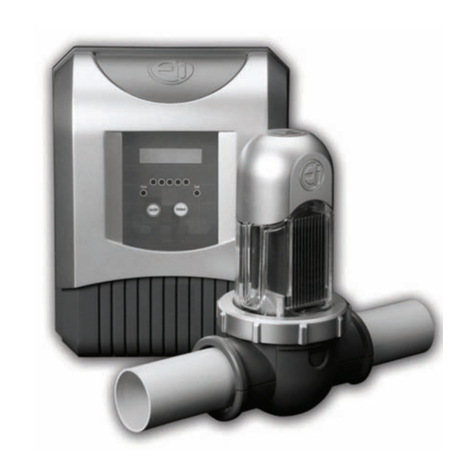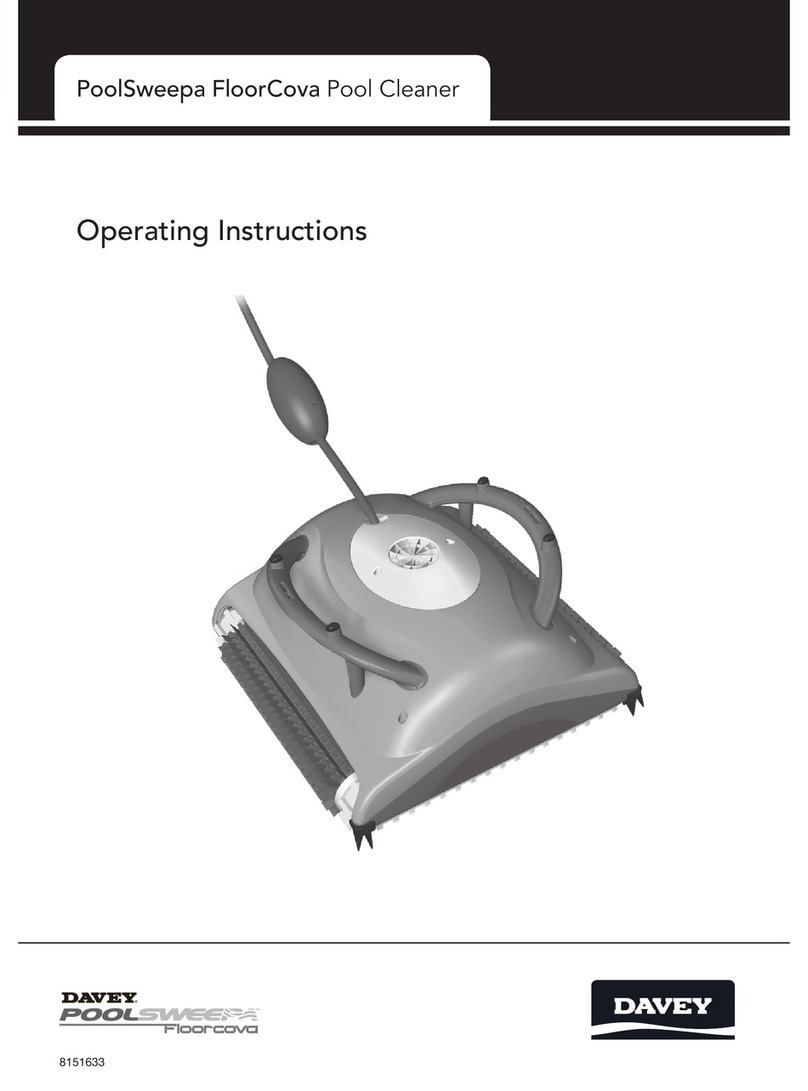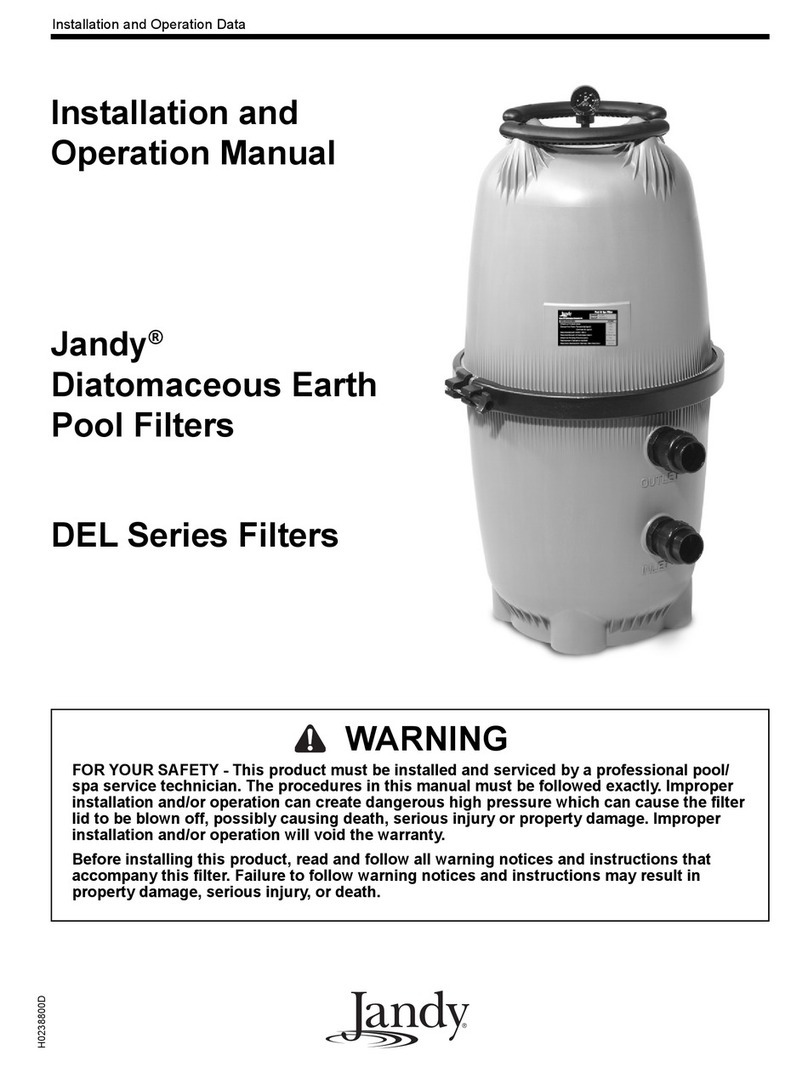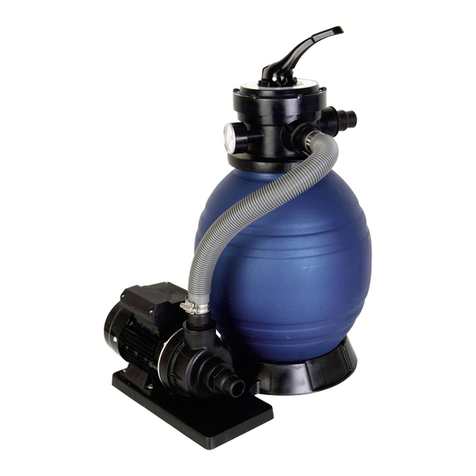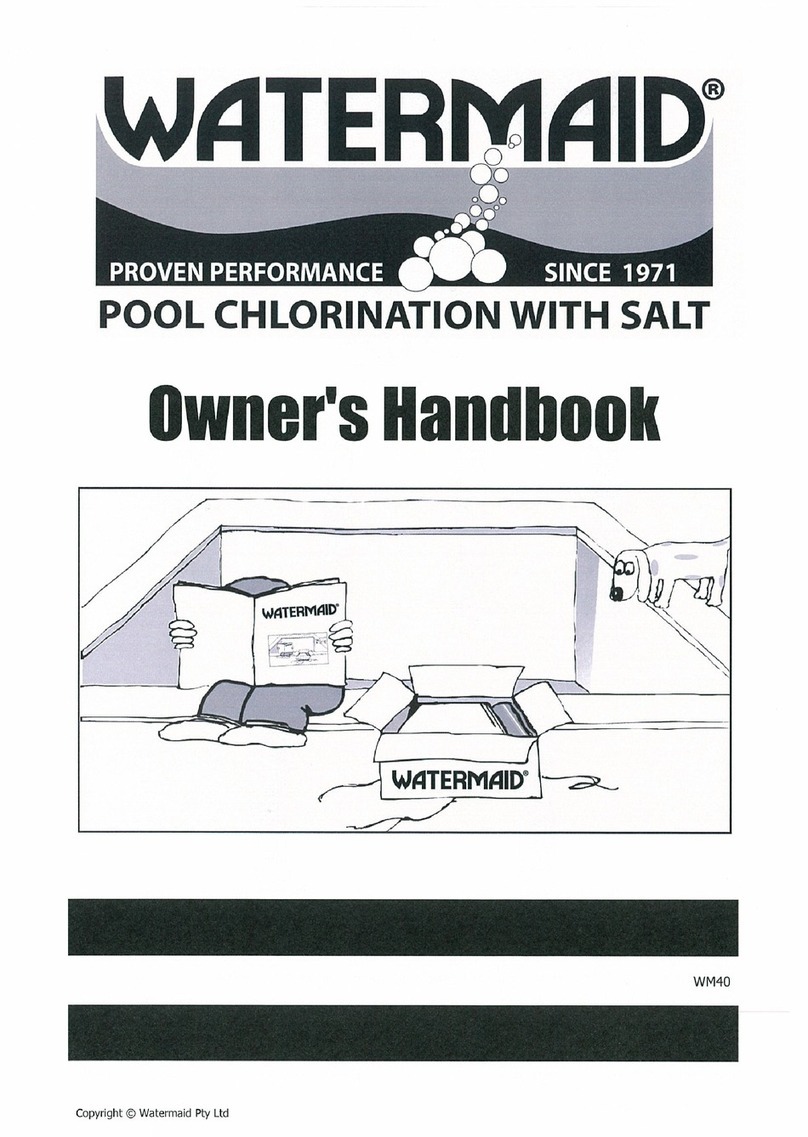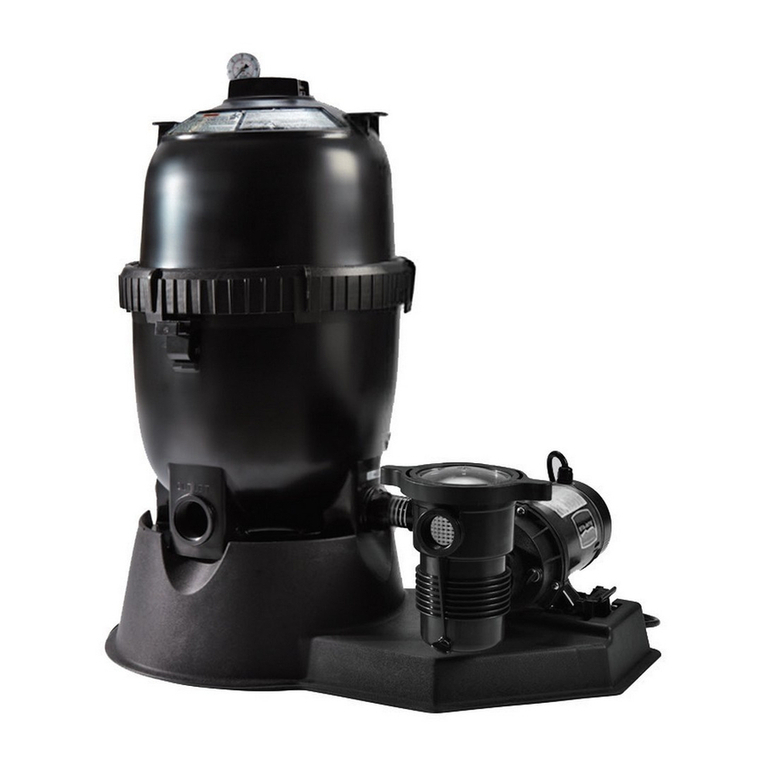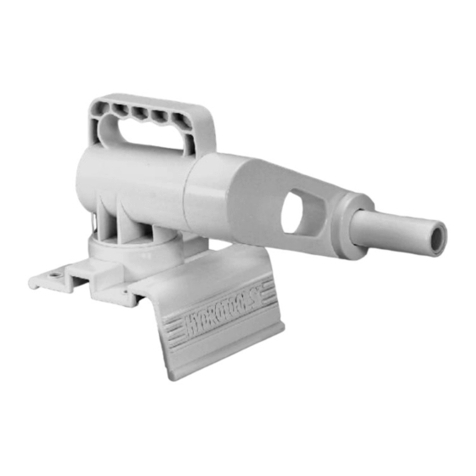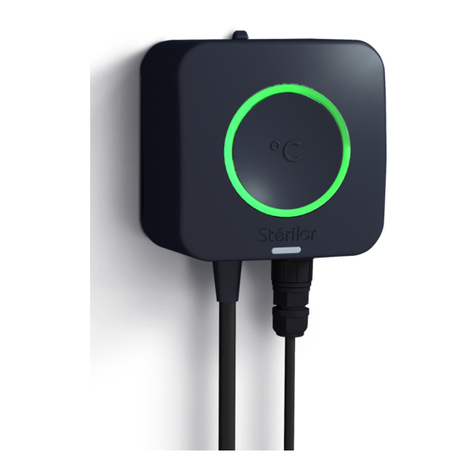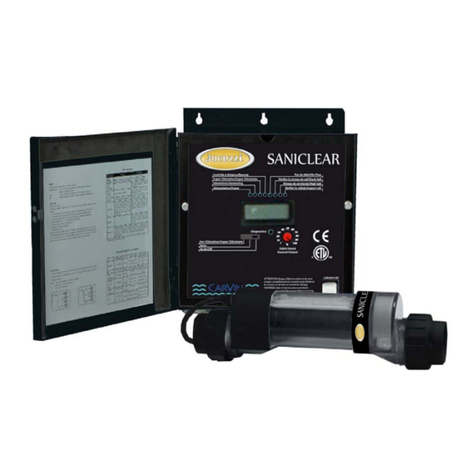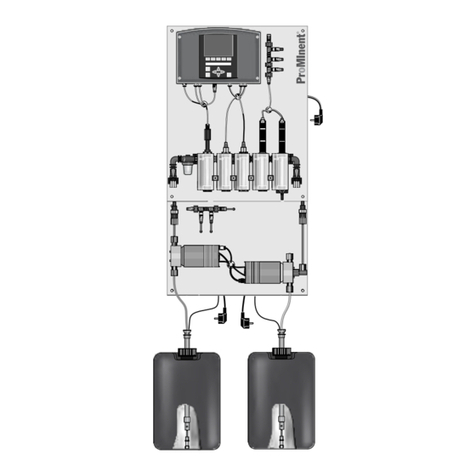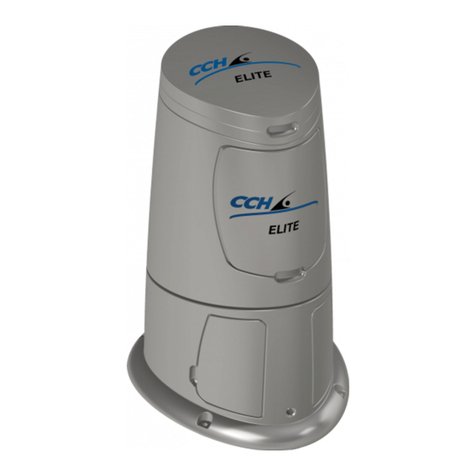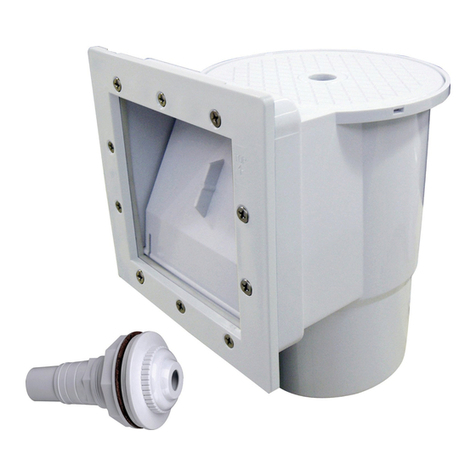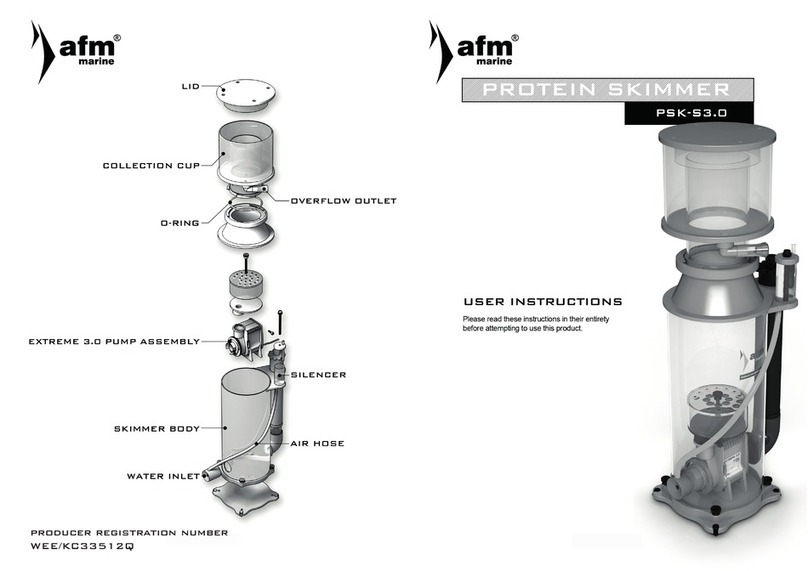
Page 6
bar hand soap with some water to the lid sealing
surface on the top of the tank before installing the
lid. Do not use any type of oil or grease that can
cause sand to get caught in the threads. Thread the
lid into the tank, making certain that the lid threads
in smoothly. If resistance is felt while turning,
remove the lid and ensure that it is not being cross-
threaded into the tank and the threads are free
of sand. Use the handles to tighten the lid hand-
tight only. Do not use impact or hammers when
installing the lid.
WARNING
Fiberglass and threads have sharp edges. To avoid
cuts, use a brush to clean threads free of sand or dirt.
4. When the lid is fully installed, the seal flange must
contact the surface of the tank.
5. If not already in place, the filter gauge/air relief
valve assembly should be installed.
H. Start-Up and Operation
WARNING
NEVER start pump while standing
within 5 feet of the filter. Starting the
pump while there is pressurized air in
the system can cause product failure
or also cause the filter lid to be blown
off, which can cause death, serious
personal injury or property damage.
WARNING
NEVER operate the filter system at
more than 50 psi of pressure. Operating
filter system in excess of 50 psi can
cause product failure or also cause
the filter lid to be blown off, which can
cause death, serious personal injury or
property damage.
CAUTION
DONOToperatelteratwatertemperaturesabove
104° F (40° C). Water temperatures above the manu-
facturer's recommendations will shorten the life span
ofthelterandvoidthewarranty.
Once service on the circulating system is completed,
the system must be properly vented of all air. Do the
following steps:
1. Turn off the pump. Switch off the circuit breaker
to the pump motor.
2. Check that the drain plug is in place and tight.
3. Check that the tank lid is correctly seated and
tight, see Figure 9, and ensure the pressure gauge/
relief valve assembly is fully installed in the lid.
4. Ensure the backwash piping is open.
5. Open the pump hair/lint pot lid and fill the pump
basket with water to prime the system. Replace the
lid. (You may have to do this several times on new
and seasonal start-ups.)
6. Completely open the air release valve on the
gauge/air release assembly by turning the knob on
the back of the assembly fully counterclockwise
(do not remove the knob).
7. Be sure to open any filter isolation valves that
were installed in the system.
8. Ensure the backwash piping is open. Set the
backwash valve handle to the “Backwash”
position, if a multiport backwash valve is installed,
and if a slide valve is used, turn the handle to
unlock and pull fully upwards to the backwash
position.
9. Stand clear of the lter and start the pump. When
a steady stream of water starts to come out of
the air release valve, close the valve. There will
be a steady stream of water flowing out of the
backwash valve piping. Continue to backwash
until the backwash water is clear (3 to 5 minutes).
10. Turn the pump off.
11. If the multiport backwash valve has a "Rinse"
position do the following:
a. Set the selector handle in "Rinse" position.
b. Start the pump and run for 30 to 40 seconds.
This helps settle the sand bed and removes
fine particles in the bottom of the sand bed.
c. Stop the pump.
12. Set the backwash valve handle to normal operation
position, or to “Filter” position if a multiport
backwash valve is installed. If using a slide valve,
push the handle down to the normal filter position
and turn the handle to lock in place.
13. Make certain all inlet and return lines to the pool
are open to allow free movement of water from the
pool and returning to the pool.
14. Completely open the air release valve on the
gauge/air release assembly by turning the knob on
the back of the assembly fully counterclockwise.
Do not remove the knob.
15. Stand clear of the filter and start the pump. When
a steady stream of water starts to come out of the
air release valve, close the valve.
16. Ensure that the water is returning to the pool. The
system is now in normal filtration mode.
17. After the pressure gauge has stabilized, turn the
bezel ring so that the arrow next to the word
"CLEAN" aligns with the needle of the gauge. As
